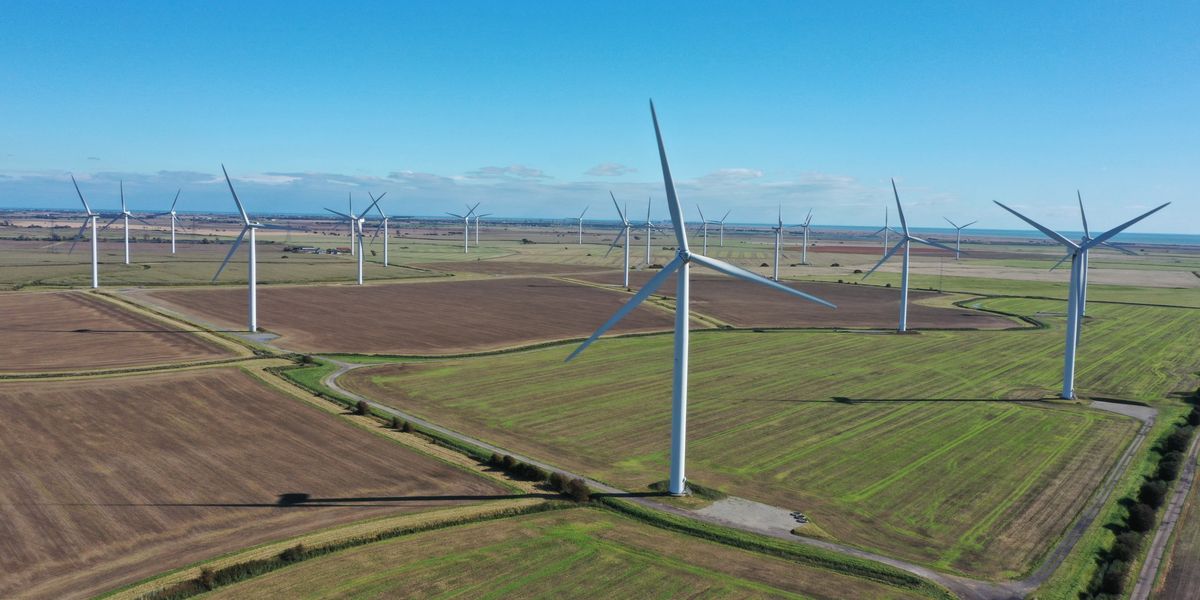British households could face costs of up to £3billion annually by 2030 to pay windfarms to stop generating electricity, the country’s grid operator has warned.
The National Energy System Operator (Neso) has issued the stark warning as Britain’s power grid struggles to keep pace with the rapid expansion of renewable energy.
The mounting costs stem from payments made to wind farm operators when they are asked to halt generation during periods of high wind output.
These “constraint payments” are necessary when wind power overwhelms existing transmission lines, forcing grid operators to intervene to maintain system stability.
The payments are designed to compensate wind farm operators for lost revenue when they are instructed to reduce output.
Costs have already reached significant levels, with constraint payments hitting £1billion last year.
“In parts of the network, new renewable generation is online sooner, and at times before the new network capacity is in place,” Neso explained in a recent report.
The grid operator added: “In such cases, when generation output exceeds existing network capacity, we pay generators to constrain (reduce) their output.”
The mounting costs stem from payments made to wind farm operators when they are asked to halt generation during periods of high wind output
PA
The issue particularly affects northern wind farms, which receive substantial payments to switch off when generation exceeds transmission capacity.
The situation could become even more severe, according to industry experts.
Octopus Energy, Britain’s leading power supplier, warns that constraint payments could reach £6billion annually by 2030 – equivalent to around £200 per household.
The company highlighted the dramatic increase in these costs, noting they rose from £242million in 2019 to £1billion last year.
MORE LIKE THIS:
“According to data from Neso, it’s estimated that if the status quo continues, the costs of running this inefficient system could rise to over £6billion by 2030,” an Octopus spokesman said.
The fourfold increase in payments over recent years has primarily gone towards compensating northern wind farms for switching off generation.
Neso has emphasised its commitment to managing these escalating costs.
“We are constantly looking for new ways to reduce costs associated with balancing electricity supply and demand on a second-by-second basis, as these costs are passed on to consumers in their electricity bill,” the grid operator said.
The current impact on household bills remains relatively modest, according to Neso.
For the 2023/24 period, constraint payments represented approximately 2.4 per cent of a typical consumer bill.
However, with costs projected to rise significantly over the coming years, there are growing concerns about the long-term impact on household finances.
The debate over these rising costs has sparked contrasting views from industry experts.
John Constable, of the Renewable Energy Foundation charity, criticised current renewable energy policies.
“Under Ed Miliband, the electricity consumer has been consistently sacrificed to meet arbitrary targets and favour wind and solar generators, through over-generous subsidies and scandalous constraint payments,” he said.
However, Craig Lowrey from Cornwall Insight argues the costs will yield future benefits.
“In the long run, shifting away from the unpredictable and volatile global wholesale market and focusing on sustainable, homegrown renewable energy can help stabilise and reduce costs,” Lowrey said.
The Department for Energy Security and Net Zero says it is actively working to expand the UK’s transmission grid to reduce these payments
Getty
He added that while the transition requires significant investment, it offers the potential for lower future energy bills and improved energy security.
The Government maintains that constraint payments are a natural part of running an efficient electricity system, though there is broad recognition that current costs are becoming excessive.
The Department for Energy Security and Net Zero says it is actively working to expand the UK’s transmission grid to reduce these payments.
“The National Energy System Operator’s independent report shows we can achieve clean power by 2030 with cheaper electricity, even factoring in constraint payments, and a more secure energy system for Britain,” a department spokesman said.
“Through our Clean Power Action Plan, we will work with industry to rewire Britain, upgrade our outdated infrastructure to get renewable electricity on the grid, and minimise constraint payments.”



